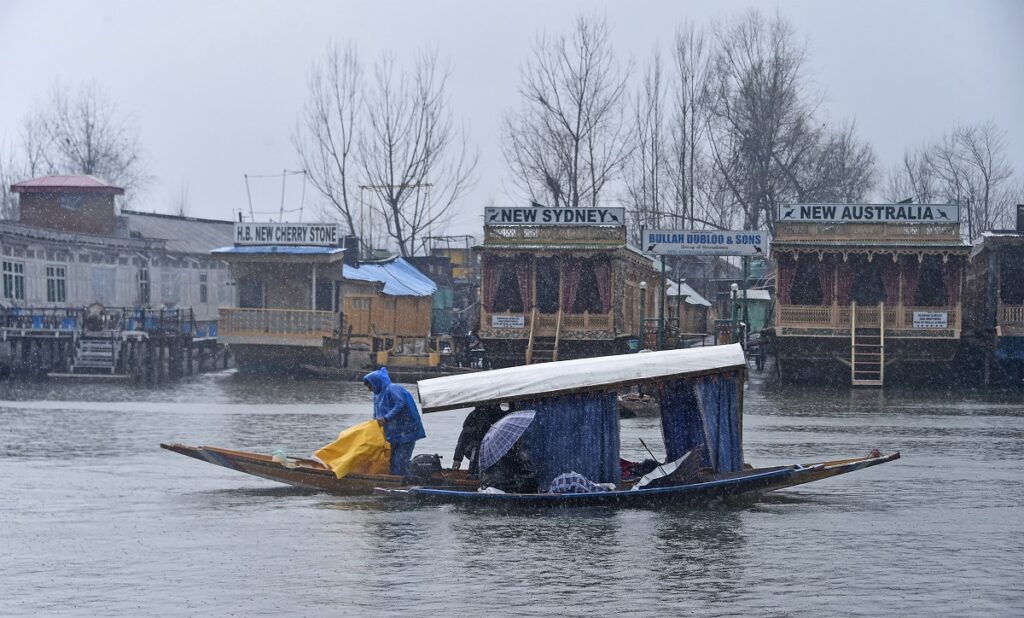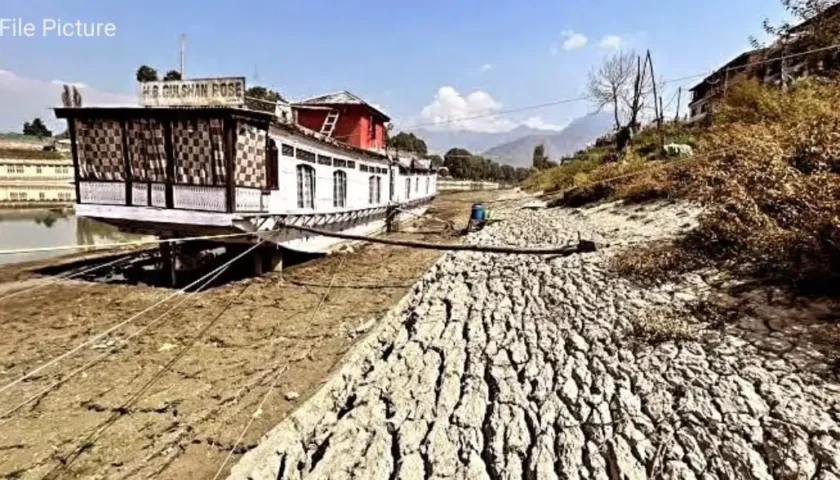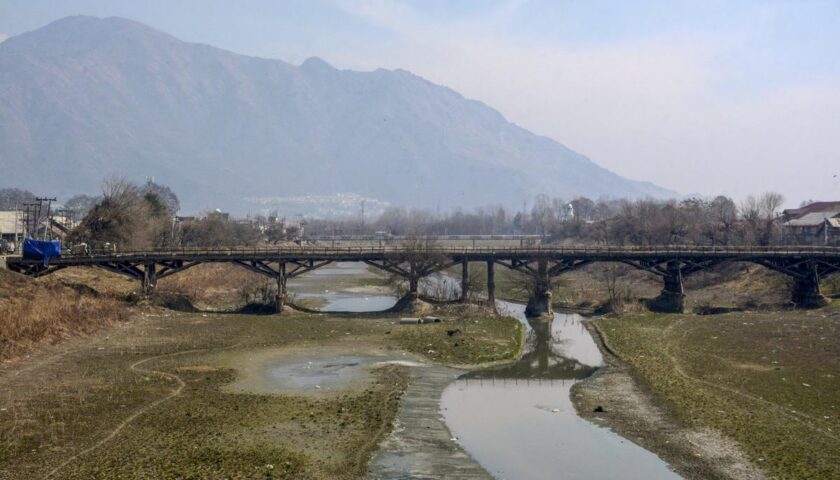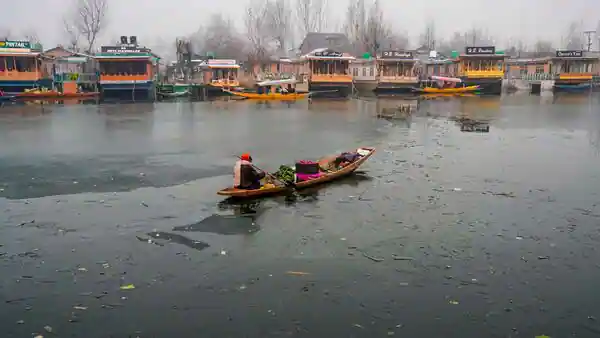Western Disturbance to Bring Heavy Rain, Snowfall in Jammu & Kashmir and Ladakh (Oct 5–7, 2025)
By: Javid Amin | 02 October 2025
When Weather Shapes Mountains and Lives
The Himalayas are not just mountains—they are living, breathing entities that dictate the rhythm of daily life in Jammu & Kashmir and Ladakh. Every shift in the winds, every snowfall, and every drop of rain carries stories of resilience, culture, and adaptation.
As October settles in, the India Meteorological Department (IMD) has issued a weather advisory predicting a strong Western Disturbance from October 5 to 7, 2025. This system is expected to bring heavy rain, snowfall, and gusty winds across the Union Territories of Jammu & Kashmir and Ladakh.
For locals, such weather is familiar but still disruptive. For tourists, it is both enchanting and risky. And for environmental experts, it is a reminder of how fragile yet dynamic Himalayan ecosystems are.
This detailed article unpacks the forecast, explains what a Western Disturbance is, and provides actionable advice for residents, travelers, and policymakers.
What is a Western Disturbance? Understanding the Science
Before diving into the specifics, it’s important to understand Western Disturbances (WDs)—a term often heard in northern India but not always fully explained.
Definition
A Western Disturbance is a low-pressure weather system originating in the Mediterranean region that travels eastward, picking up moisture and energy before reaching northern India.
-
They usually occur between October and April, peaking in winter.
-
They are responsible for non-monsoonal rainfall in north India.
-
They often bring snowfall in the Himalayas, replenishing glaciers and rivers.
Environmental Importance
-
Glacier Replenishment: Snow from WDs feeds glaciers that supply water to the Indus, Jhelum, and Chenab rivers.
-
Agricultural Boost: Winter rainfall helps wheat, mustard, and apple crops.
-
Climate Balance: They regulate temperature patterns, preventing long dry spells.
Without Western Disturbances, the Himalayan ecosystem and north Indian agriculture would face severe stress.
Forecast: October 5–7, 2025
The IMD’s latest advisory highlights the following weather expectations across the region:
Kashmir Valley
-
Rain: Moderate to heavy rainfall expected in plains, especially in Srinagar, Anantnag, and Baramulla.
-
Snowfall: Famous hill stations like Gulmarg, Sonamarg, and Pahalgam are likely to witness fresh snowfall.
-
Impact: Day temperatures may dip by 4–6°C, signaling the early arrival of winter chill.
Ladakh
-
Snowfall: Heavy snowfall expected in Zanskar, Drass, and Leh’s upper reaches.
-
Impact: Zojila Pass may be temporarily shut, cutting off Ladakh’s connectivity with Kashmir.
Jammu Region
-
Rain: Thunderstorms and isolated heavy showers in Rajouri, Poonch, Doda, Kishtwar, and Ramban.
-
Impact: Landslide risks on the Ramban-Banihal stretch of the Jammu-Srinagar highway.
Temperatures
-
A sharp drop of 4–6°C across Kashmir and Ladakh.
-
Frost and early snow may affect apple orchards and late-harvest crops.
Travel & Connectivity Impact
Himalayan weather is notorious for disrupting travel, and this Western Disturbance is no different.
Air Travel
-
Srinagar Airport: Possible flight delays/cancellations due to low visibility and snow on runways.
-
Leh Airport: High probability of disruptions given Ladakh’s elevation and snowfall.
Road Travel
-
Jammu–Srinagar Highway: Frequent landslides possible, particularly in Ramban–Banihal stretch.
-
Zojila Pass: May be temporarily closed due to heavy snow.
-
Mughal Road: Likely closure in Pir Panjal region due to snow.
Adventure & Trekking
-
Treks to Kolahoi Glacier, Tarsar-Marsar, and Great Lakes are unsafe during this period.
-
Adventure tourists are advised to avoid camping in high-altitude areas.
Advisory for Residents & Tourists
For Residents
-
Secure rooftops & shelters: Snow and rain can damage rooftops, tents, and livestock shelters.
-
Stock essentials: In remote villages, store food, medicines, and fuel in anticipation of road closures.
-
Stay updated: Monitor IMD and disaster management advisories.
For Tourists
-
Avoid high-altitude travel: Postpone trips to Gulmarg, Sonamarg, Pahalgam, Leh, and Zanskar.
-
Check with airlines & hotels: Confirm bookings to avoid last-minute cancellations.
-
Travel insurance: Always advisable in mountain regions during uncertain weather.
For Farmers
-
Apple & Walnut Harvest: Farmers should expedite late harvests before snowfall.
-
Protect Livestock: Ensure animals are sheltered in dry, insulated sheds.
Environmental Significance: A Double-Edged Sword
Western Disturbances bring both blessings and challenges:
Positive Impacts
-
Snow for glaciers ensures summer water supply.
-
Rain supports agriculture, especially Rabi crops.
-
Tourism boost once snowfall stabilizes, drawing visitors to Gulmarg and Sonamarg.
Negative Impacts
-
Landslides & avalanches threaten lives and infrastructure.
-
Flooding risk if rain coincides with melting snow.
-
Travel paralysis affects tourism-dependent economies.
Climate change has made WDs more unpredictable—sometimes arriving late, sometimes stronger than expected.
Climate Change and Western Disturbances
Research shows that climate change is altering Western Disturbance patterns:
-
Increased frequency of extreme events—very heavy snow or rain in short spans.
-
Shifting timelines, with WDs arriving earlier or later than usual.
-
Potential reduction in snow-to-rain ratio, threatening glacier health.
This means regions like Kashmir and Ladakh face greater risks of flash floods, droughts, and agricultural losses.
Local Voices: What Residents Say
To understand the human side, here’s what locals often share during such weather events:
-
Shepherds in Pahalgam: “We move our flocks early to lower pastures when IMD issues advisories.”
-
Apple Farmer in Shopian: “Snowfall before harvest means heavy losses. We fear October storms the most.”
-
Tourist in Gulmarg: “Snowfall is beautiful, but being stranded at the airport for three days was not.”
These voices remind us that weather is not just science—it’s life.
Safety Checklist
✅ Avoid unnecessary travel on highways
✅ Charge mobile phones & keep power banks
✅ Store dry food, water, and medicines
✅ Keep emergency contacts handy
✅ Follow official advisories, not social media rumors
Bottom-Line: A Reminder of Nature’s Power
The upcoming Western Disturbance (Oct 5–7, 2025) is another reminder of the fragile balance of life in the Himalayas. While snow and rain nurture rivers, farms, and tourism, they also test resilience.
For residents, preparedness is survival.
For tourists, caution is wisdom.
For policymakers, better forecasting and infrastructure are the need of the hour.
As mountains brace for the storm, one truth remains clear: the Himalayas are both our protectors and our teachers—reminding us that respect for nature is the first step toward living in harmony with it.




